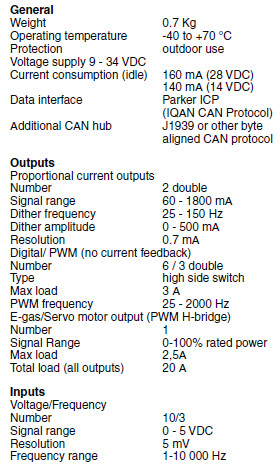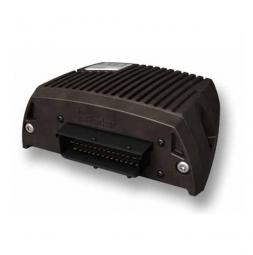IQAN-XT2 Expansion Units
Key Features
- Features for this type of module are flexibility, weather resistance and safety.
- The XT2 has an additional CAN hub designed to interface with J1939 diesel engines on mobile machinery and has a dedicated output for electronic throttle control.
- The IQAN-XT2 module has a flexible I/O interface which gives system designers increased options.
- The aluminum housing is designed to be rugged, but light and has a sealed, automotive AMP/Tyco power timer connector.
Application
IQAN-XT2 is a legacy unit from the IQANdevelop platform of IQAN expansion modules that is also supported in IQANdesign platform systems. Key features for this type of module are flexibility, weather resistance and safety.
All IQAN expansion modules communicate with a master over a CAN-BUS serial link. The XT2 has an additional CAN hub designed to interface with J1939 diesel engines on mobile machinery and has a dedicated output for electronic throttle control.
The IQAN-XT2 module has a flexible I/O interface which gives system designers increased options. The same physical pin can be used for different types of inputs or outputs. Types of I/O such as E-gas and PWM outputs increase the flexibility of the module. Digital outputs now have features such as softstart and peak & hold. The J1939 CAN hub allows the XT2 to communicate directly with an electronic engine control bus.
The aluminum housing is designed to be rugged, but light and has a sealed, automotive AMP/Tyco power timer connector. The XT2 has a membrane to prevent condensation inside the housing. This controller is designed for the outdoor environment.
The unit executes a self-test during start up and cyclic operation. An internal watch dog checks for software errors and will interrupt outputs if errors are detected. The IQAN-XT2 is made using selected components and conforms to strict international requirements. Diagnostics: If an error is detected an LED on the top of the controller flashes a sequence to indicate the nature of the error.


